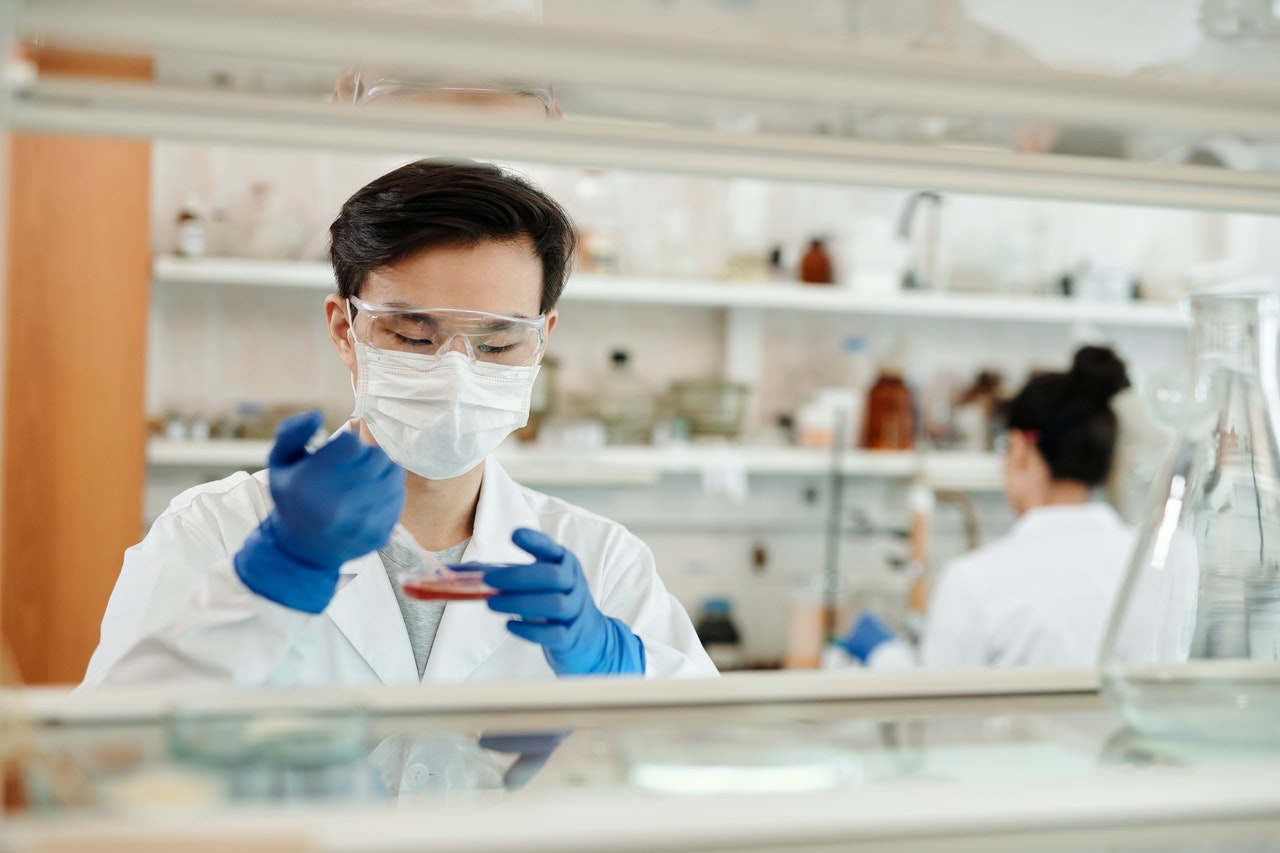The cleaning validation process
The purpose of the cleaning validation is to verify that the cleaning procedures of a plant and of an equipment ensure that it does not occur a contamination. Cleaning validation is part of Annex 15 of the European GMP.
Contaminations can be of this type:
- Physical: external elements (hair, flies…)
- Chemical: residues from previous processes, detergents, degradation products (substances such as active ingredients or excipients which, for various reasons, degrade and can become more or less toxic than the original substance)
- Biological: fungi, bacteria, endotoxins…
Cleaning validation should not be confused with cleaning verification. Cleaning verification is an on-time check in order to continue the production in the absence of a cleaning validation. Cleaning verification is carried out by means of a swab analysis which certifies the cleanliness of the equipment at that particular time. In the long term, cleaning verification leads to an increase in costs and time (swabs and analysis are needed at the end of each production run).
How cleaning validation takes place
The first aspect to be considered is that cleaning validation must consider the equipment and its processes as a whole.
Cleaning validation steps
PROTOCOL
The protocol must contain the following information
- Accurate description of the equipments, possibly with photographic documentation or data sheets.
- Description of cleaning procedure(s).
- Description of sampling points. Sampling points should be chosen rationally, i.e. by identifying critical areas where contamination may occur and where cleaning may be less effective. Tracer fluids may also be used to identify these points. The choice of the points should be explained and justified.
- Description of sampling techniques (rinsing o swabbing). With rinsing, a sample of the final rinse of the cleaning procedure is analysed. With swabbing, the cleaned surface is swabbed. The contamination datum must be compared with the size of the system that is or could potentially be in contact with the product. In practice, the result that emerges from the swabbing done on a surface of, for example, 10 cm X 10 cm, must be recalculated in relation to the entire size of the equipment. Another aspect of the sampling technique that must be taken into account is to prove the effectiveness of contamination detection. This can be deduced from an analytical test that shows the ability of recovery. If, for example, we deliberately soil a surface with a volume of 100 of a certain contaminant, the sampling test can tell us how much volume we are able to detect with the method used. If our test detects 50, I will be able to say that my recovery is 50%. Normally a minimum of 60% should be achieved, otherwise the recovery is considered unreliable and the method must be changed. This part about the efficiency of sampling has to be included in the protocol, but often recovery tests are included in the validation process of the analytical method used by quality control. Therefore, validation of the analytical method is often referred to in the protocol. Samples should be analysed immediately because they are subject to rapid degradation
- Description of the products used: if the washing procedure is without detergent, the situation is simplified as the product matrix uses the risks related to the active substances, excipients and degradation products. Each substance has an acceptance limit, the PDE, which is the daily dose of a given substance that a person can take each day without risk. The PDE is not a fixed value, but must be calculated in relation to other variables such as the age and weight of the person who could take the substance. In all these cases, the worst case scenario is always used.
- Description of the drying procedure. Drying is important from a microbiological point of view, as leaving it wet or damp can lead to contamination. However, drying may invalidate the sampling and during validation it is preferred to sample before drying. In some cases drying can (in microbiology) help the cleaning process, for example if I use hot air at 120° degrees I will destroy any remaining microorganisms.
- Holding time of cleaning. This is the period after washing within which the cleanliness of the equipment is maintained. In other words, it is the time within, after washing, I can use the equipment without having to do anything. To establish this duration, sampling tests are carried out.
- Dirty holding time. How long I can leave the equipment dirty knowing that I will be able to clean it optimally.
- Campaigns with the same products (a campaign is defined as the production of several batches with the same characteristics: active ingredients, dosages…): if certain equipment always and only works with the same product, it is possible to proceed, for example, with quick washes. However, this choice must be supported by a study showing that this does not create contamination problems.
DETECTION AND ANALYSIS
There is no specific number of batches after which testing should be carried out, we speak of an “adequate number”, generally 3 is considered acceptable.
Microbiological analysis requires 5 days incubation to obtain full results. Preliminary results can also be obtained after 2 or 3 days, but these must then be confirmed and depend on the microorganisms present (the various types have different culture media that require different preparation and incubation phases).
Chemical analysis (HPLC – High Performance Liquid Chromatography) provides results within a day, but these results then have to be re-processed.
REPORT
The results of the verifications have to be inserted in a report. If the results are compliant all is well, in the case of non-compliant results an analysis is carried out.
The non-compliance is analysed and a corrective action is started.
- Badly done washing. For example, if the problem is always found in the same place, consider to change the procedure to improve the cleaning of that part of the equipment.
- Badly done sampling. In this case, there is often non-compliant data without precise logic, at different points. Most of the time it is a matter of incorrectly done sampling (swab touching external parts such as a floor) or difference in swab pressure (in swabbing). For this reason, it would be preferable if the person doing the sampling is always the same and also that the person is trained. Often this is done by Quality Control personnel who are more careful about these aspects. The point and how the sample was taken should be checked.
When everything is in compliance, it is declared that the procedure ensures proper cleaning and the production can begin.
Replacement of equipment parts or detergents
If you replace a part of the equipment in like-for-like modality, the cleaning validation is still valid, but you have to do the initial cleaning verification (because it comes from the factory) and a microbiological verification.
If I add a new part in the equipment, the cleaning validation has to be done again. The validation must be done on the new component and the results added to those of the rest of the equipment (a recalculation is performed with a general re-evaluation of the validation status and it is checked that the new element does not cause the global result to exceed the expected limit).
Change of processed products or detergents used for cleaning
If I change the products processed by the equipment or the detergents used for washing, I have to update the matrix and if the product I insert is less dangerous than the one I replace, then the cleaning remains valid. Otherwise, I have to do the cleaning validation again.
Example: I have to produce a new drug, I do production, sampling and analysis. While I am waiting for the results, I carry out a cleaning verification in order to proceed with the production of other batches. If these other batches are of products already verified in the cleaning, I do not have to do anything after their normal production and subsequent washing.
Note carefully: sometimes the same machinery may have different washing procedures depending on the productions carried out. Some productions may need acidic washing detergents and others may need basic detergents, so there will be different procedures and all of them will need to be properly checked.

Foto di Edward Jenner da Pexels




